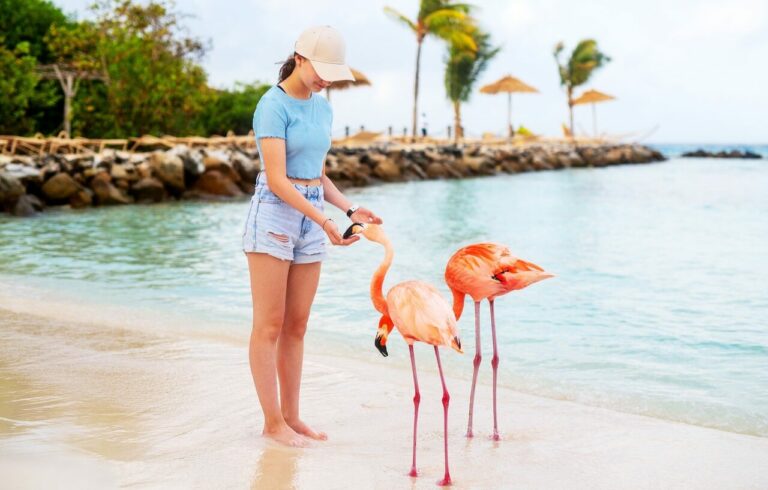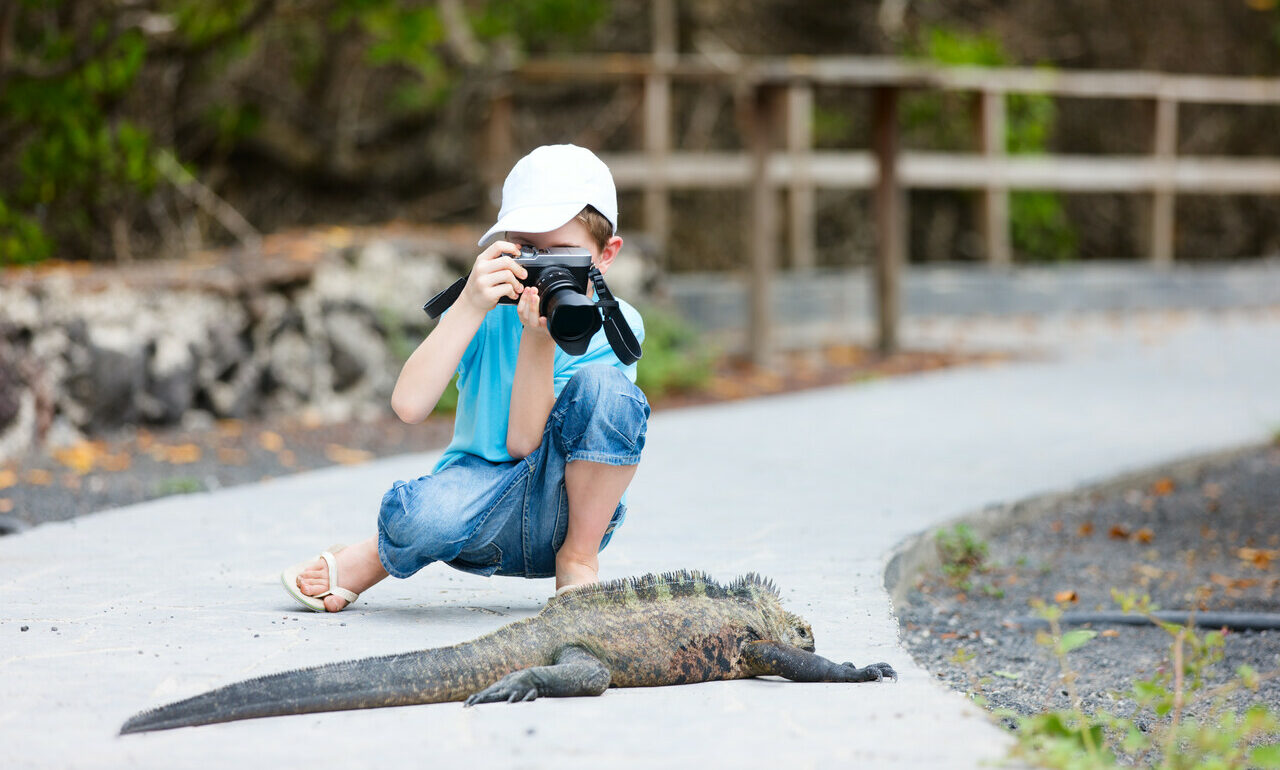
Galápagos: An aquatic safari amidst creatures from another world
From small dinosaurs to giant turtles, prehistoric animal species turn the Galápagos Islands in Ecuador into a fun outdoor biology class.
By Daniel Nunes Gonçalves
It almost feels like we’ve stepped into Jurassic Park. First, as we enter the hotel, we encounter dozens of giant tortoises, about 2 meters long and 100 years old, strolling calmly beside us. Later, as we wade into the turquoise waters of Tortuga Bay beach, who startles us by swimming just 30 centimeters away? A colorful 1-meter marine iguana, resembling a miniature aquatic dinosaur. No, we haven’t traveled back to the time of dinosaurs. We’re in the spectacular Galápagos Islands, Ecuador, one of the last great natural reserves on the planet, where ordinary folks like you and me and our families can interact fearlessly with incredibly rare species of prehistoric animals.

Better than a zoo: one “wow” after another
It’s because of its isolation in the middle of the Pacific Ocean, a distant 1,000 kilometers from the Latin American coast, that the Galápagos archipelago has managed to protect so many incredible animals over the centuries. To reach this destination that enchants nature-loving travelers of all ages — from grandparents to grandchildren — you first need to fly to one of the Ecuadorian cities, such as the capital Quito. It’s worth stopping for a few days to take the children to the Middle of the World Museum, where the Equator divides the planet into two hemispheres, and enjoy curious experiments there like water draining clockwise (on the southern side) or counterclockwise (on the northern side).
From Quito, it’s another 2 hours of flight to the archipelago. After landing on one of the only 3 islands with airports (out of a total of 127 islands), begins a kind of aquatic safari where one “wow!” follows another. It’s more fun and instructive than any zoo because in Galápagos, all the animals are free and happy in their habitat.
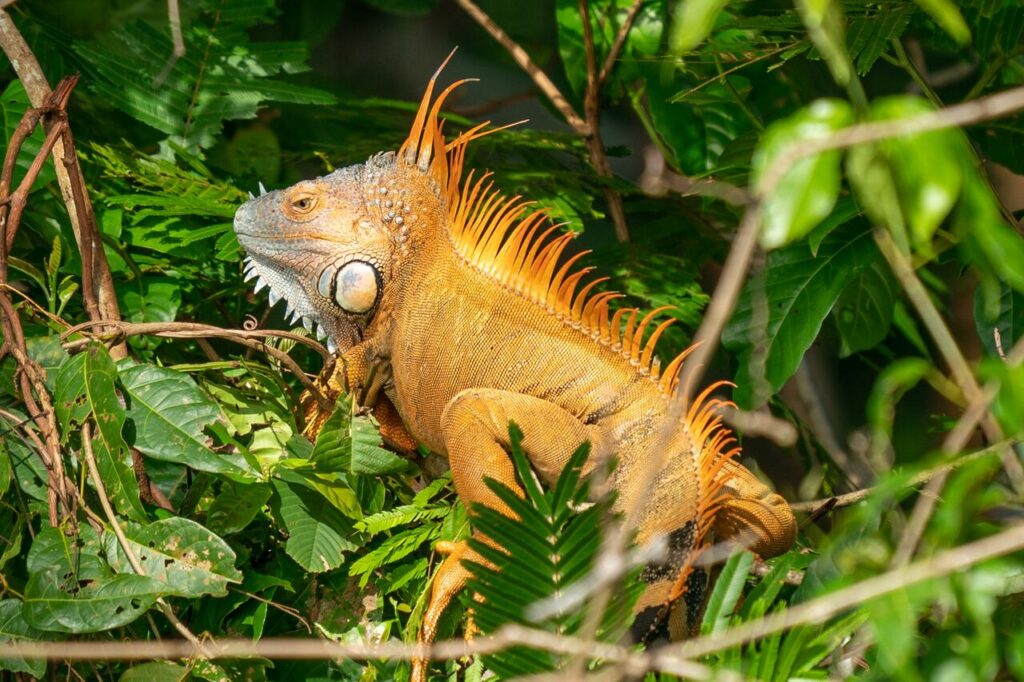
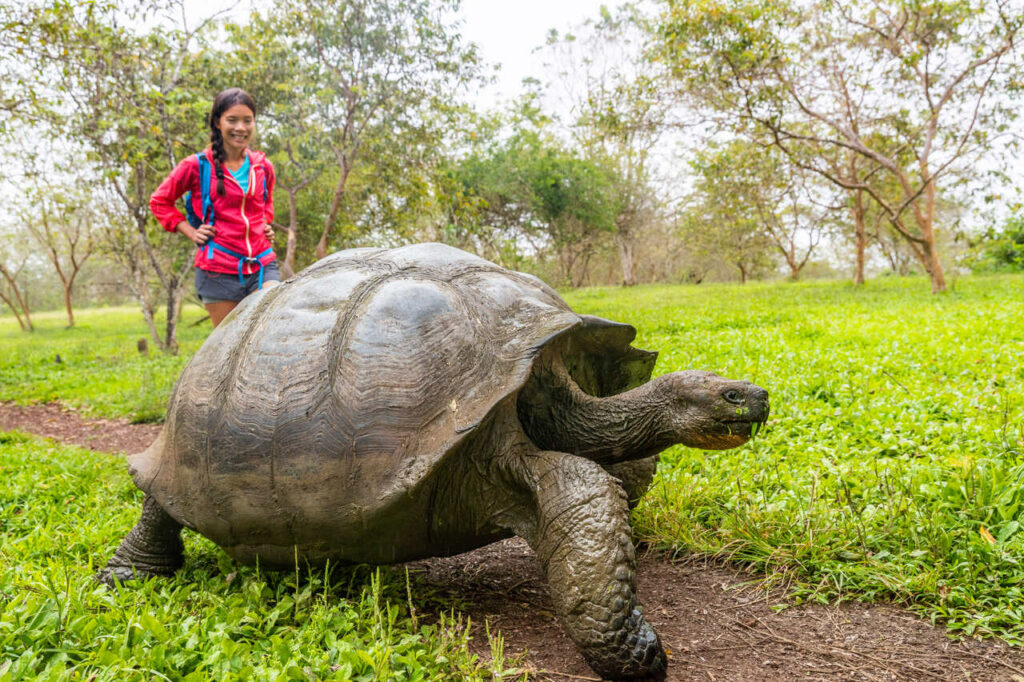
Among sea lions and pelicans in Puerto Ayora
Although much of the fauna has a prehistoric origin, the only four inhabited islands — Santa Cruz, San Cristobal, Isabela, and Floreana — are not remote places from the time of caves. With approximately 25 thousand inhabitants, the island of Santa Cruz, the best base to explore the archipelago, boasts hotels, restaurants, and the most comprehensive infrastructure for those who prefer to stay on solid ground rather than sleeping on boats. In Puerto Ayora, the main city of Santa Cruz, is the strategic port from which boats depart for day trips to neighboring islands. Sea lions rest on the sidewalk of the dock, while pelicans try to snatch some fish at the fish market.
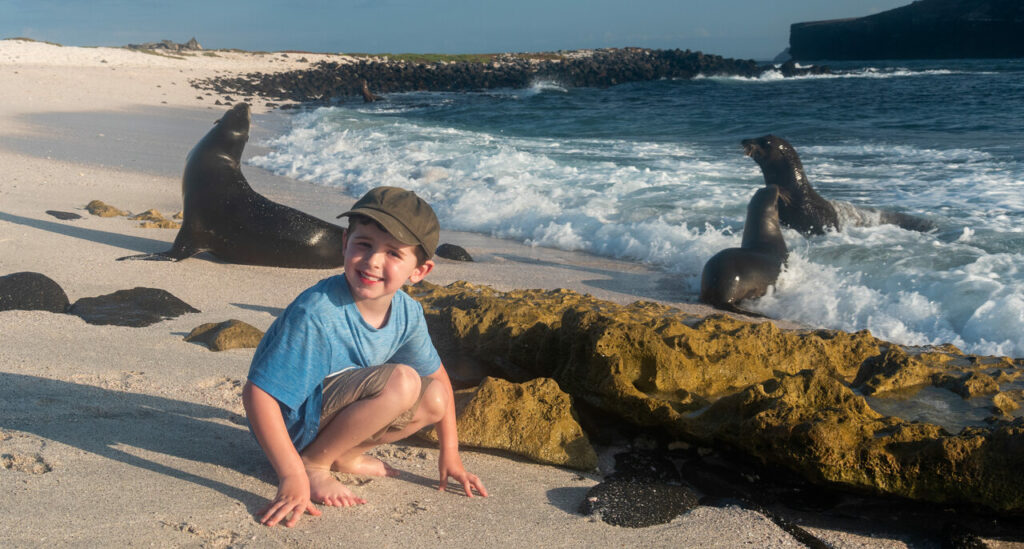
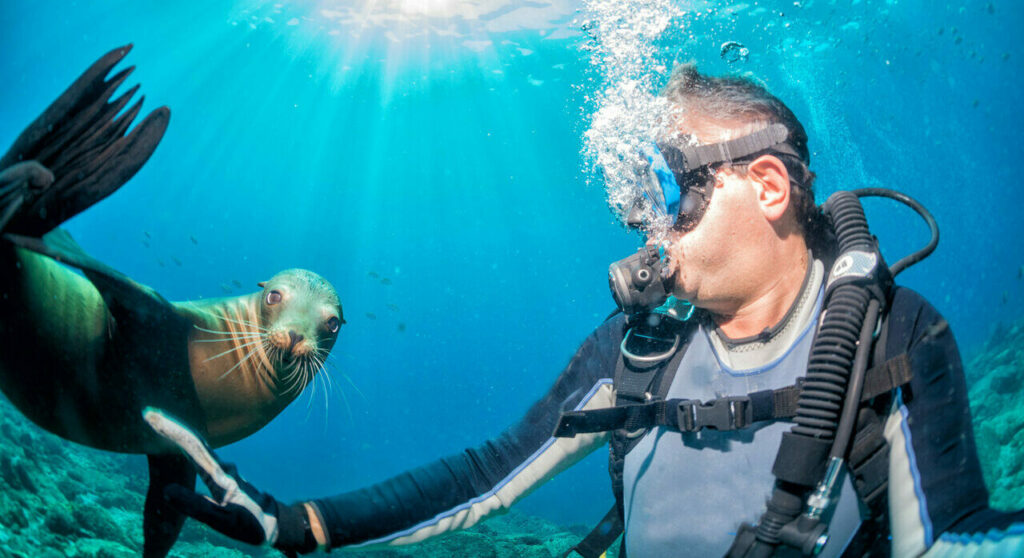
Pretend you’re Charles Darwin
It’s on these boat trips that both children and adults feel like true explorers of these remote islands. You can see sharks, whales, dolphins; there are penguins, sea lions, and nearly 3,000 marine species; blue-footed and red-footed boobies, and 45 species of birds that exist only there. This abundance of wildlife, and the subtle differences among the animals of each island, intrigued the most famous visitors to the Galápagos. British naturalist Charles Darwin (1809–1882) sailed through these remote waters in 1840, aboard the legendary Beagle captained by Fitz Roy, and conducted studies that were essential to his theory of evolution of species. This is a journey that brings enchantment and learning for the whole family!
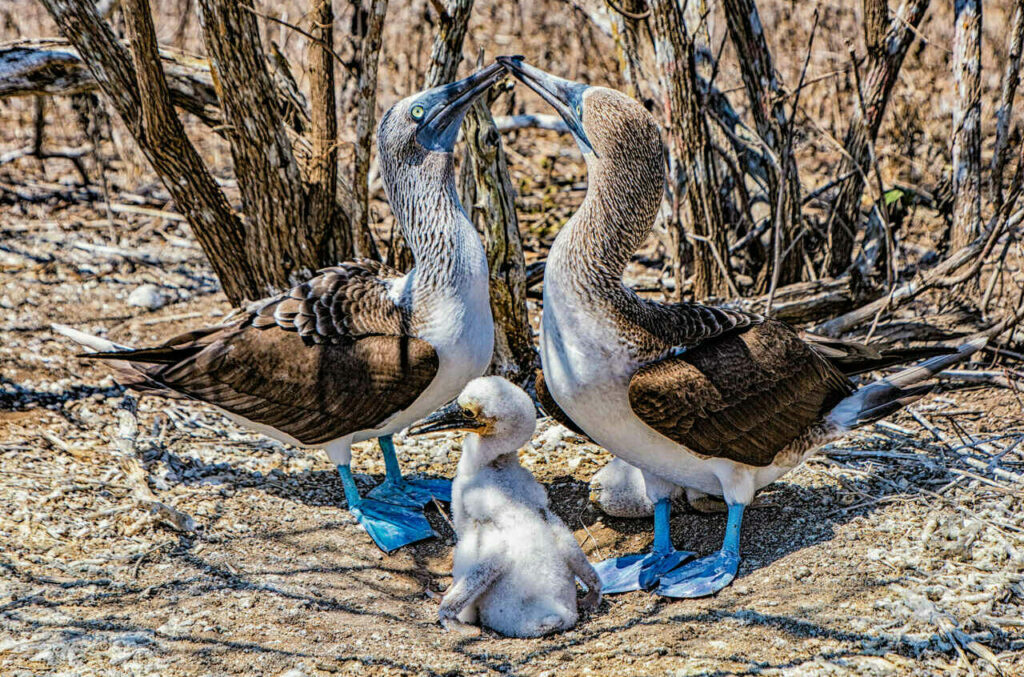
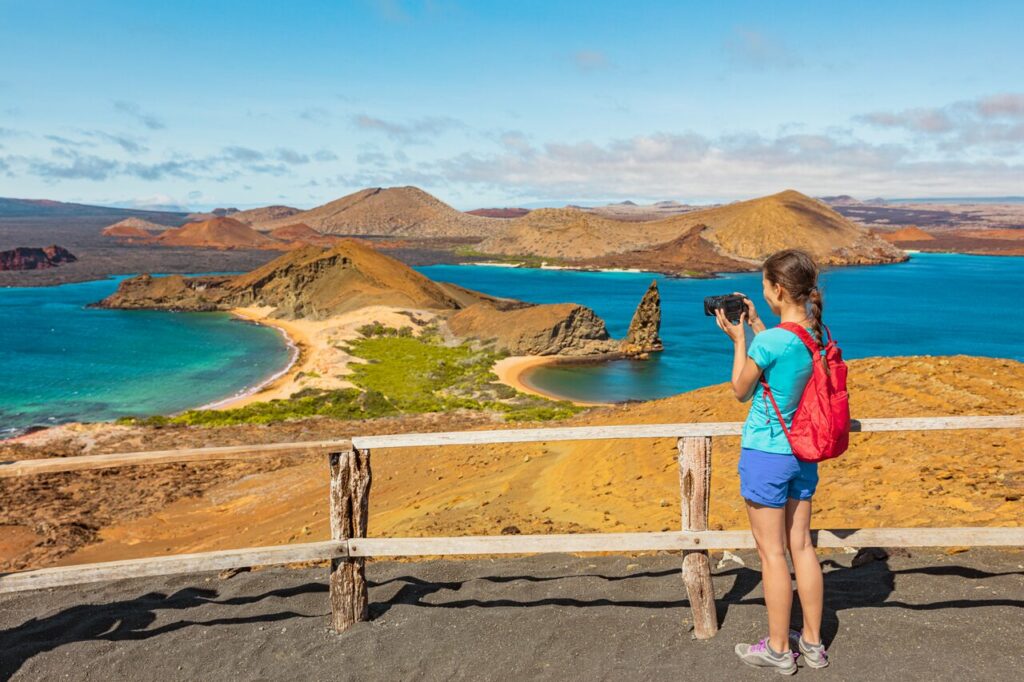

Fun Outdoor Biology Class
According to Darwin, it’s not the strongest species that survive, but rather the ones that best adapt to the environment. This and other lessons about the richness of Galapagos’ diversity turn any excursion with a good local guide into a true class on how each creature lives, eats, and reproduces. Did you know that the male frigatebird inflates a sort of red scarf around its neck to court females? And that “Lonesome George,” the last representative of the Pinta Island giant tortoise subspecies, who passed away in 2012, can be seen embalmed at the headquarters of the National Park in Puerto Ayora? Nearby, the Charles Darwin Research Station also deserves a stop to understand the importance of preserving the archipelago.
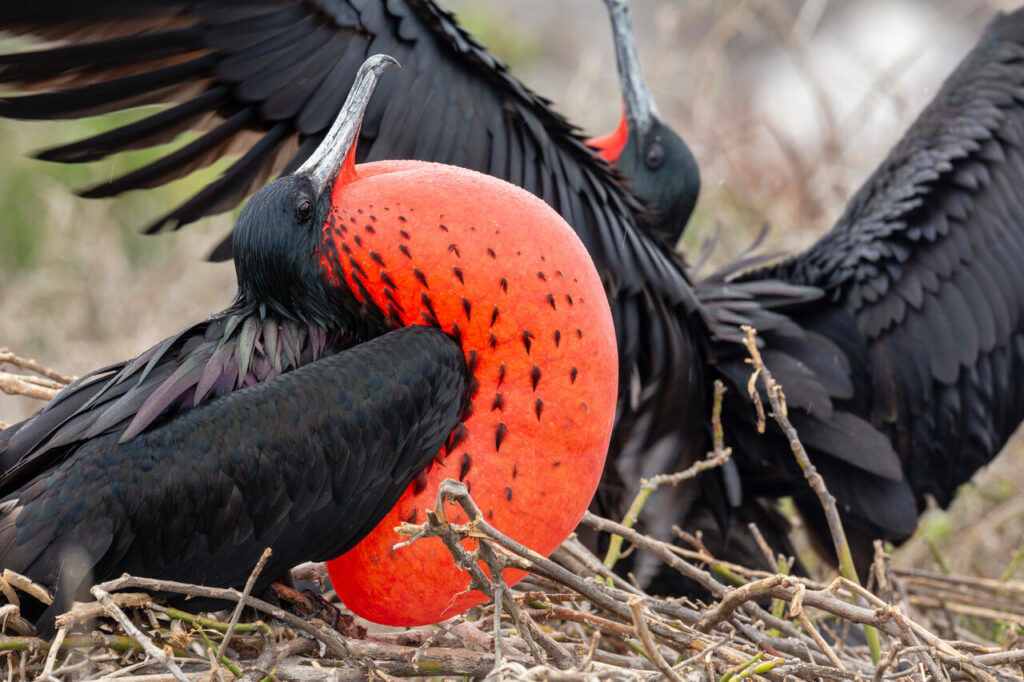

Photo 1: Male frigatebird with puffed chest / Photo 2: Charles Darwin Museum and Station
Better for children who can swim
But it is on the excursions, both on land in Santa Cruz and by boat to the neighboring islands, that parents and children connect the most by discovering together the surprises of the Galapagos. Children over 6 years old or with the ability to swim and snorkel independently, for example, will enjoy the colorful schools of fish underwater even more. And if a huge sea turtle or an ugly aquatic iguana suddenly appears in front of the mask, don’t be alarmed. The animals won’t harm you. They are at peace and well-fed in this spectacular temple of nature where they have lived for millennia.
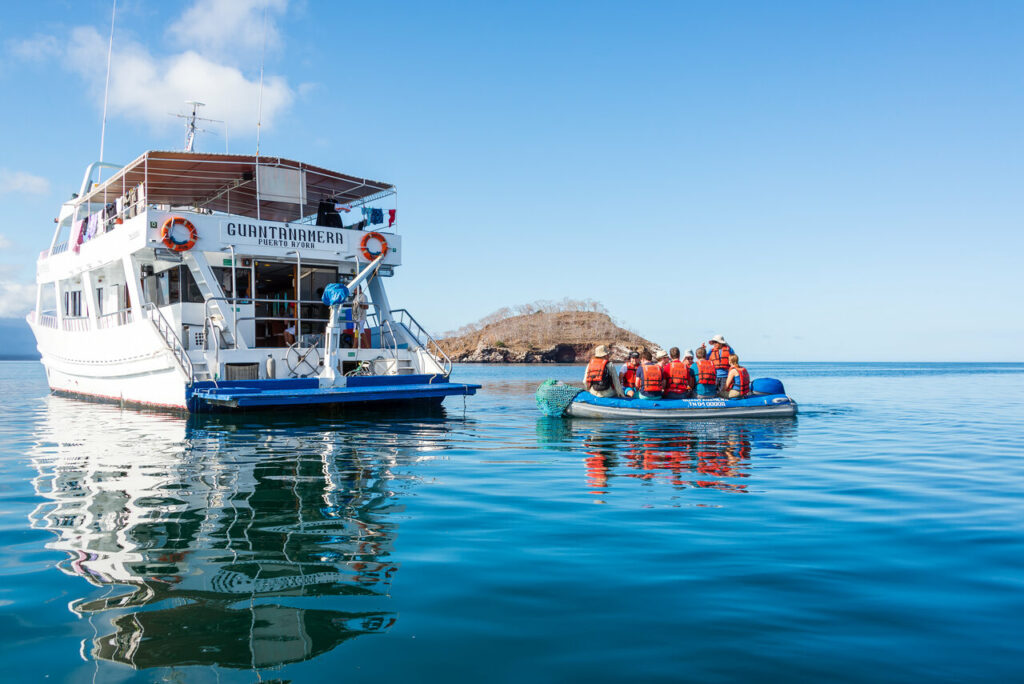
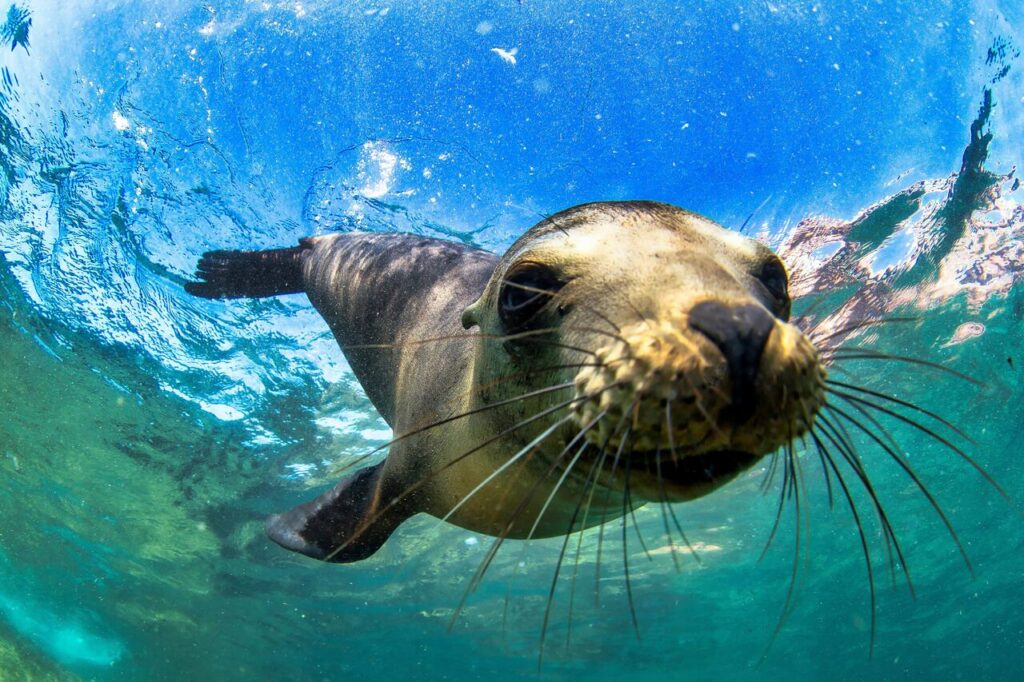
Staying in a Hotel on the Island or on a Boat?
We prefer to stay on solid ground, according to a survey with the Family Trip Magazine team, who have been to the Galapagos Islands several times – and love this place.
Staying on an island is good for:
- those who tend to get seasick with the rocking of waves on boats;
- those with children who need space to run around;
- those who enjoy strolling through shops, restaurants, and ice cream parlors in town.
And what are the advantages of staying on a boat?
- visiting the more distant islands, where it’s not worth doing a day trip;
- sleeping under the stars, rocked by the sway of the sea;
- diving in style: there are exclusive boats for scuba divers with cylinders.
There are quite a variety of options for hotels and boats.
On solid ground, you can stay in the hustle and bustle of Puerto Ayora, in private villas amidst the territory of giant tortoises, or even in stylish glamping tents.
Boats can range from expedition cruises for up to 100 passengers to small luxury yachts. Due to the strict island preservation regulations, passengers usually only disembark from the boats once in the morning and once in the afternoon, always in small groups. But beware: there’s no flexibility for those who just want to stay on the beach for another 5 minutes. It’s important to pay attention not to miss the return dinghy – or you might end up living forever on a beautiful Pacific island…
Services

ACCESS
There are no direct flights between Brazil and the Galapagos Islands. You need to fly first to a city in Ecuador such as Quito and Guayaquil – and then take a 2-hour flight from there. Baltra Airport, next to Santa Cruz Island, is more strategic (than St. Christopher’s) for those who prefer to stay on land and take daily boat trips.
HOTEL
Montemar Eco-Luxury Villas
Opened in 2019, the two villas of the boutique lodge considered the most sustainable in the archipelago are private houses for up to 4 or 8 people located in the heart of the giant tortoise migration territory. Having raised their two children, Cayetano (named after Caetano Veloso) and Mirasol, on the islands, owners Reyna and Roberto (passionate about Brazilian music) can suggest the best tours for the family according to the children’s ages. Surrounded by giant tortoises, it is located atop the hill on Santa Cruz Island, 20 minutes from Puerto Ayora.
Check it out here: montemar.ec
Finch Bay Galapagos Hotel
With the advantage of being the only hotel in Santa Cruz located facing the blue sea of Galapagos, in front of the port from where boat tours depart from Puerto Ayora, the refined Finch Bay has all the comforts of mainland that you wouldn’t find in Galapagos boat accommodations. There are 27 air-conditioned suites, pool, spa, and restaurant. Just take a quick boat ride to access the urban center of Puerto Ayora, where restaurants, bars, shops, and local cultural centers are concentrated.
Check it out here: www.finchbayhotel.com or on Booking with free cancellation.
The agencies Viajar com Crianças or Viajar com adolescentes know Galapagos well and can organize this super trip for your family.
BEST TIME
You can visit the Galapagos Islands all year round, but the waters are less cold and offer excellent visibility for snorkeling and diving in the summer and autumn of the Southern Hemisphere, from December to May. It is recommended to spend at least 7 to 10 days to enjoy the island in a relaxed way. Prefer to take children when they already know how to swim or float using a buoy, mask, and snorkel, so that parents and children can enjoy the sea together.
Sustainable lodging among turtles
A must-see tour on Santa Cruz Island is visiting the territory of migration of Galapagos giant tortoises, where you can get up close to them. Also located there is the most sustainable lodging experience in the archipelago.
Built with local natural materials, such as petrified lava from volcanoes, the only two rental houses of Montemar Eco-Luxury Villas use only rainwater and electricity entirely generated from solar panels. Part of the food, organic and planted in an agroforestry system, comes from the home garden, and even the award-winning coffee is self-produced, in the coffee plantation that guests can visit.
Owned by a couple of naturalist guides – Ecuadorians Reyna Oleas and Roberto Plaza —, who met on the islands, married, and had two children, Montemar has become a reference for conscientious travelers precisely because of its conservation efforts. By removing invasive plant species from the land, they allowed the return of the original vegetation, which is the favorite food of the tortoises. That’s why it’s possible to see, at certain times, more than 100 of these giants just a few meters from the bed.

Things the Way Family love to pack in their suitcase:
Gate
Eletronics for the travel: smartphone, drone, câmera, charger,…
Destiny
UV clothes, bikinis, caps, diving goggles, snorkel mask and other accessories…













